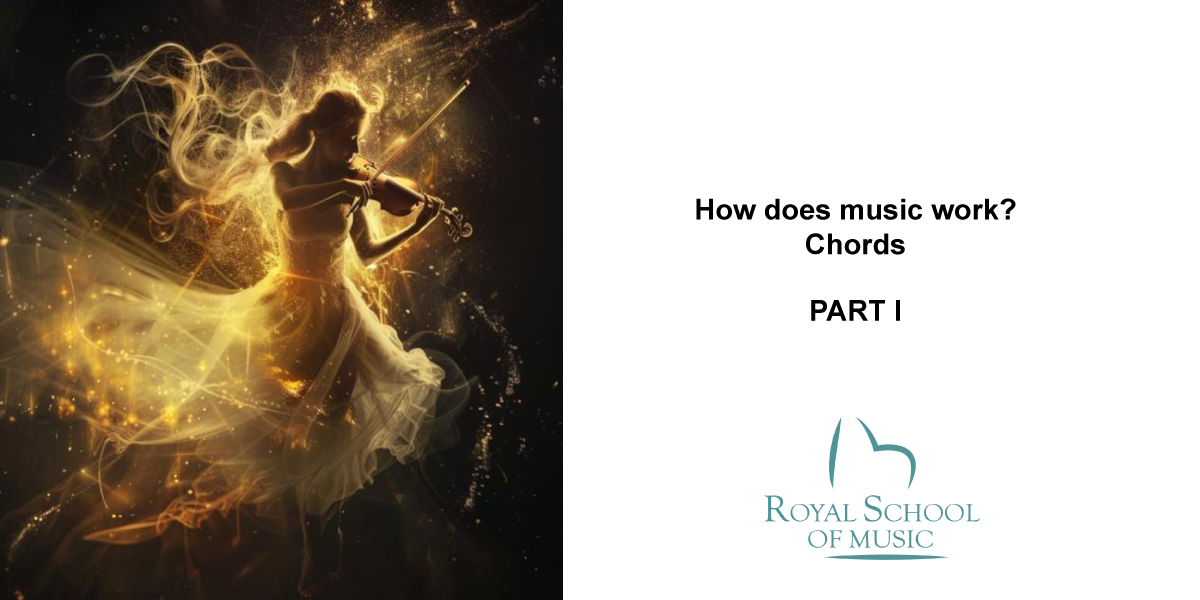How does music work? Chords

How does the structure of Music work?
Music functions as an expressive and emotional language, using elements such as chords and harmony to create textures and sound narratives. Let’s break down how these essential elements work and how they interact to bring music to life.
The structure of music helps to provide coherence, variety, and meaning, making the experience of listening to it comprehensible and emotionally rich.
In the academic field of music, understanding how music works through chords is essential for any in-depth theoretical analysis.
This blog aims to explore, in an erudite way, the fundamentals of chords, their function in musical structure, and how they contribute to musical theory and practice in general.
Chords
Fundamentals of Chords
A chord in music is essentially a set of notes that sound simultaneously and are constructed based on the superposition of thirds, starting from a fundamental note. Chords are crucial components of harmony, one of the three fundamental dimensions of music along with melody and rhythm.
Basic Structure of Chords:
- Major Chord: Formed by a major third and a perfect fifth from the fundamental note. Example: C-E-G.
- Minor Chord: Incorporates a minor third instead of a major one. Example: A-C-E.
- Diminished and Augmented Chords: Diminished chords use a diminished fifth, while augmented chords employ an augmented fifth.
- Extended Chords and Their Functions:
- Sevenths, Ninths, Elevenths, and Thirteenths: These chords add additional layers of thirds above the basic fifth, expanding the harmonic spectrum and enriching the musical texture.
Harmonic Function
Chords not only create the basis of harmony but also define the progression and resolution within a musical piece, contributing to the narrative and emotional tension. The function of chords can be analyzed in the following way:
- Tonic (I): Provides a sense of beginning and resolution, serving as ‘home’ in the harmonic progression.
- Dominant (V): Creates tension that seeks resolution towards the tonic, fundamental to the dynamics of the progression.
- Subdominant (IV): Acts as a bridge between the tonic and dominant, offering direction and movement.

Harmonic Progressions
A chord progression is the sequence in which chords occur throughout a composition, and it is critical for the development of the musical structure. Some fundamental harmonic progressions include:
- Three-Chord Progression (I-IV-V): The basis of countless pieces in both popular and classical music.
- Blues Progression (I-IV-V-IV): Essential in the blues genre and influential in jazz and rock.
Educational Illustration: Types of Chords

Here is an educational illustration showing different types of musical chords on a piano, including major, minor, diminished, and augmented chords. Each section highlights the corresponding keys on the piano to show the notes that make up each chord. This image is designed to be clear and informative, suitable for use in a music theory class. You can see the highlighted keys and labels indicating each type of chord.
Impact on Musical Composition
Understanding how chords work allows composers to manipulate the musical language to express a wide range of emotions and narratives. Chords are powerful tools that, when used masterfully, can evoke everything from deep sadness to exuberant joy.
Chords are much more than simple combinations of notes: they are the essence of musical harmony and a fundamental tool for the composer. Through academic study of chords, theorists and musicians can deepen their understanding of music as a dynamic and expressive art form. This scholarly approach not only enriches our knowledge but also expands our ability to appreciate and create music on a deeper level.
If you have any questions or want to start learning music, write to us!www.royalschoolofmusic.es



